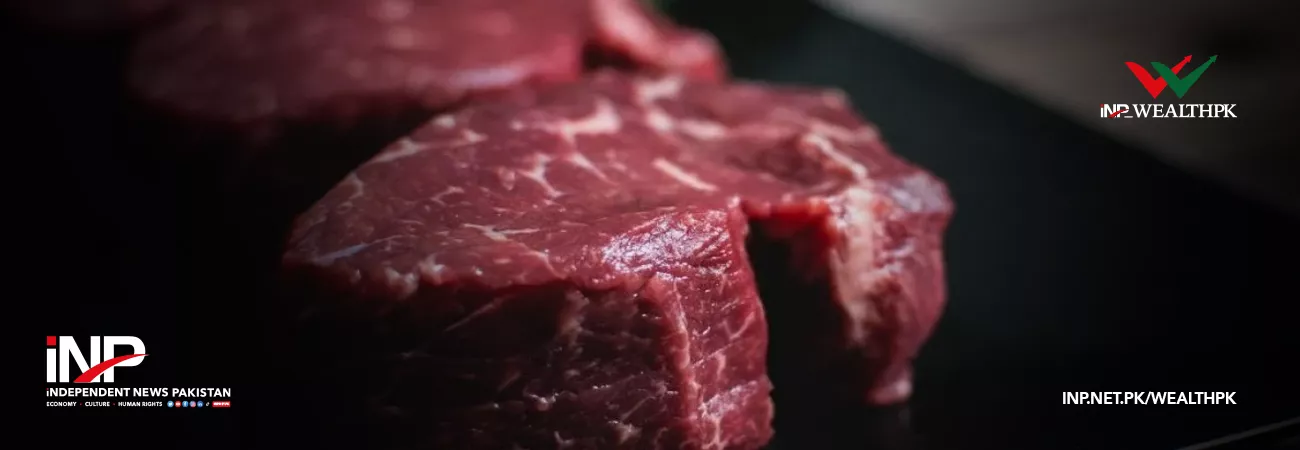INP-WealthPk
Azeem Ahmed Khan
Pakistan hopes to start meat exports to China next month after approval granted to its three companies to export heat-treated beef, said a renowned trade and marketing expert. China has allowed three Pakistani meat processing companies to export heat-treated beef after modern heat treatment plants were established to eliminate the foot and mouth disease (FMD) virus from beef.
The prevalence of FMD in animals was a major obstacle for Pakistan to enter the Chinese beef market because it is a serious and highly contagious animal disease that affects cattle, sheep, goats, camelids, and deer. Chinese experts provided assistance in installing the facilities for making the beef virus-free. The three meat processing companies proposed by the Ministry of National Food Security and Research to the Chinese authorities and approved by them include Organic Meat Company Limited (TOMCL), Tata Pakistan, and Fauji Meat Ltd.
"Hopefully, the export of meat will start next month, as we (just like the other two selected companies) are in the process of sending samples to China for approval," Ahsan Saeed, Marketing and Trade Manager of TOMCL, a Karachi-based company, said while talking to WealthPK. "China is such a huge market that even if we send our entire exported meat, we cannot fulfil its demand," he said.
The exported meat will be semi-cooked at 84 degrees centigrade steam to eliminate FMD, said the manager of TOMCL, which is already exporting meat to Commonwealth of Independent States, Saudi Arabia, Oman, Jordan, and Maldives. The modernisation of meat processing will provide Pakistani businesses with access to wider markets for meat products with enhanced value. Markets that import heat-treated beef from all over the world include Russia, Indonesia, and South Korea. Pakistan can also obtain their consent for the shipment of meat.
China is the world's largest producer, consumer, and importer of meat. Due to the country's growing middle class and shifting dietary habits, there has been a major increase in the demand for high-quality animal protein, so it imports meat to reduce the demand and supply gap. According to Statista, over 92 million metric tonnes of meat was produced in China in 2022. However, to meet the national demand, it imported 2.7 million tonnes of beef, 0.6 million tonnes of poultry meat, and 0.4 million tonnes of mutton and lamb in 2022 alone. Similarly, in February 2023, China’s animal meat product imports amounted to approximately $2.21 billion, around 21% more than $1.89 billion in the same month of the previous year.
As Pakistan increases its meat exports to meet China's demand, it is crucial to prioritise sustainable livestock farming practises. “We hold the fourth largest livestock in the world, yet Pakistan is nowhere in the world’s top 20 exporters,” Ahsan Saeed said, urging the government to support this industry. In Pakistan, the livestock population mainly consists of buffaloes, goats, sheep, poultry, and camels. According to Pakistan Economic Survey 2021-22, the national herd population of livestock during the last three years has grown slowly, as shown in the table below:

"In order to address investment-related issues in the value-added livestock export sector, the government is considering developing this sector in the shape of export meat processing zones and disease-free zones, facilitating the construction of modern slaughter houses after assessing the industry’s requirements, and providing various schemes through financial sector support," the survey said.
The focus of the government is also on breed improvement for enhanced productivity, the establishment of a nucleus herd, and the identification of breeds well adapted to Pakistan’s various agro-ecological zones.
Secretary General of All Pakistan Meat Exporters and Processors Association (APMEPA) Syed Hassan Raza said the association is committed to making Pakistan an emerging leader in the meat sector to cater to regional and global markets while meeting domestic demand by making the industry more technology-oriented and innovative.
“We see growth prospects in new segments, including building skills for value-added beef products, strengthening branding and packaging, setting up disease-free zones, and implementing a tagging system to cater to international demand," he said.
Pakistan’s livestock population accounts for the most important subsector of agriculture, contributes more than 60% to the total agricultural economy, and employs more than 35 million people, or 8 million families, in rural subsistence livestock production.
Credit: Independent News Pakistan-WealthPk













